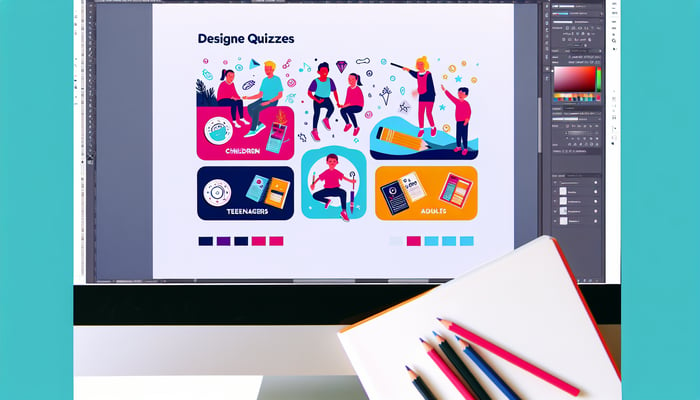Introduction
Quizzes are a fun and engaging way to assess knowledge, reinforce learning, and even entertain. However, designing quizzes that resonate with different age groups requires careful consideration. Each demographic has unique preferences, cognitive abilities, and engagement levels. In this blog post, we will explore how to effectively design quizzes for various age groups, ensuring they are both enjoyable and educational.
Understanding Your Audience
Before diving into quiz design, it's essential to understand the characteristics of your target age group. Here are a few key factors to consider:
- Cognitive Development: Younger children may struggle with abstract concepts, while teenagers and adults can tackle more complex questions.
- Interests: Each age group has different interests; quizzes should reflect themes and topics they find engaging.
- Attention Span: Younger audiences may have shorter attention spans, necessitating shorter quizzes with more direct questions.
Designing Quizzes for Specific Age Groups
1. Children (Ages 5-12)
When designing quizzes for children, the focus should be on fun and interaction. Here are some tips:
- Use Visuals: Incorporate colorful images, animations, or characters to capture their attention.
- Simple Language: Use straightforward language and avoid complicated terminology.
- Interactive Elements: Include drag-and-drop features or multiple-choice questions that are engaging.
- Short Length: Keep quizzes brief, ideally under 10 questions, to maintain their interest.
2. Teenagers (Ages 13-19)
Teenagers look for quizzes that are relevant and challenging. Here’s how to appeal to this group:
- Incorporate Pop Culture: Use references to movies, music, and social media to connect with their interests.
- Challenge Them: Include questions that require critical thinking, such as scenario-based queries.
- Mobile-Friendly: Ensure quizzes are easily accessible on smartphones, as this is their preferred device.
- Encourage Sharing: Facilitate sharing results on social media to enhance engagement.
3. Adults (Ages 20 and Up)
For adult audiences, quizzes should offer depth and relevance. Consider the following:
- Diverse Topics: Cater to varied interests—current events, career-related questions, or hobbies.
- Longer Formats: Adults can handle more extensive quizzes, so consider 15-20 questions.
- Analytical Questions: Include problem-solving scenarios or case studies to engage their analytical skills.
- Provide Feedback: Offer detailed explanations for answers to enhance learning.
Conclusion
Designing quizzes for different age groups requires an understanding of their unique needs and preferences. By tailoring your quizzes to engage children, teenagers, and adults effectively, you can create enjoyable and educational experiences. Remember to keep the content relevant, interactive, and age-appropriate to maximize engagement and learning outcomes.



